Are you fascinated by unique and striking plants? Do you aspire to have a cactus that stands out from the crowd? Look no further than Cleistocactus strausii, also known as the Silver Torch Cactus. This slender columnar cactus, with its fuzzy silver-white trunks, is a real showstopper. But how do you care for this captivating beauty in the UK?
In this article, I will guide you through the essential care steps for Cleistocactus strausii, from providing the right light conditions to watering and fertilizing tips. I will also touch on propagating, repotting, and maintaining this stunning cactus. So, if you’re ready to add a touch of exotic beauty to your indoor or outdoor space, let’s dive into the world of Cleistocactus strausii care.
Appearance of Cleistocactus strausii (Silver Torch Cactus)
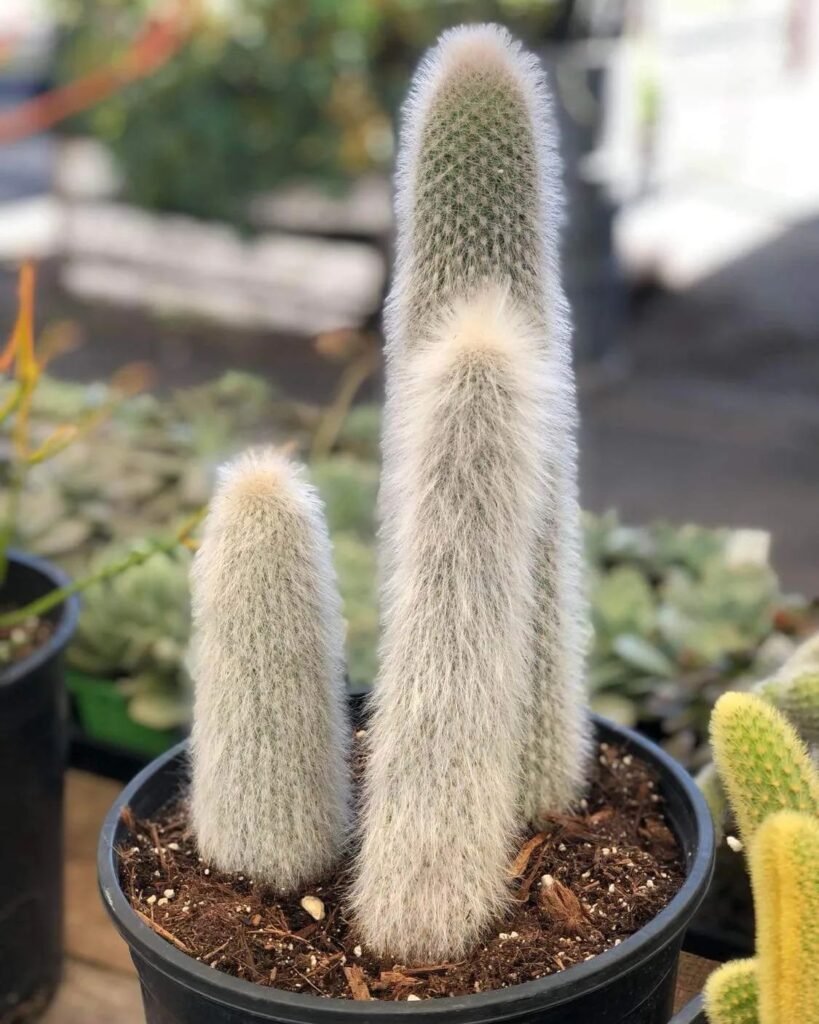

As a keen gardener, I find the Cleistocactus strausii, or Silver Torch Cactus, to be a fascinating plant with a distinctive appearance. This slender, columnar cactus can grow up to about 90 cm (3 feet) tall, making it an eye-catching feature in either an indoor or outdoor garden. Its most striking characteristic is the fuzzy, silver-white covering that adorns its trunks. This “hair” not only gives the plant a soft and ethereal look but also provides insulation and protection against the harsh sunlight and cold temperatures found in its native mountain habitats in Bolivia and Argentina.
After several years of growth, the Cleistocactus strausii reaches maturity and rewards its caretakers with a beautiful display of narrow, pink, tubular flowers. These delicate blooms emerge from the top of the cactus, adding a splash of colour to its overall appearance. It’s important to note, however, that flowering typically occurs when the plant is around 10 to 15 years old, so patience is indeed a virtue when it comes to witnessing this captivating spectacle.
The flowers of the Cleistocactus strausii are particularly striking. Once the plant reaches 10 to 15 years of age, it displays these beautiful, narrow, tubular, pink flowers during the summer months. This blooming period adds a burst of colour to your indoor or outdoor space. However, the plant needs to achieve a minimum height of about 90 cm (3 feet) before it starts flowering.
Witnessing the emergence of the Cleistocactus strausii flowers is indeed a rewarding experience for any plant enthusiast. The vibrant pink blooms contrast beautifully against the silver-white fuzz on the cactus trunks, creating a visually pleasing display. It’s a joy to enjoy the natural beauty and unique charm that the Cleistocactus strausii brings to a garden or interior space.
 Did you know? The Silver Torch Cactus is renowned for its spectacular silver-white spines and striking crimson flowers that bloom in daylight, attracting bees and birds. Originating from the high altitudes of Bolivia and Argentina, it showcases nature’s incredible adaptability by thriving in cold, arid mountain environments.
Did you know? The Silver Torch Cactus is renowned for its spectacular silver-white spines and striking crimson flowers that bloom in daylight, attracting bees and birds. Originating from the high altitudes of Bolivia and Argentina, it showcases nature’s incredible adaptability by thriving in cold, arid mountain environments.
Light Requirements for Cleistocactus strausii
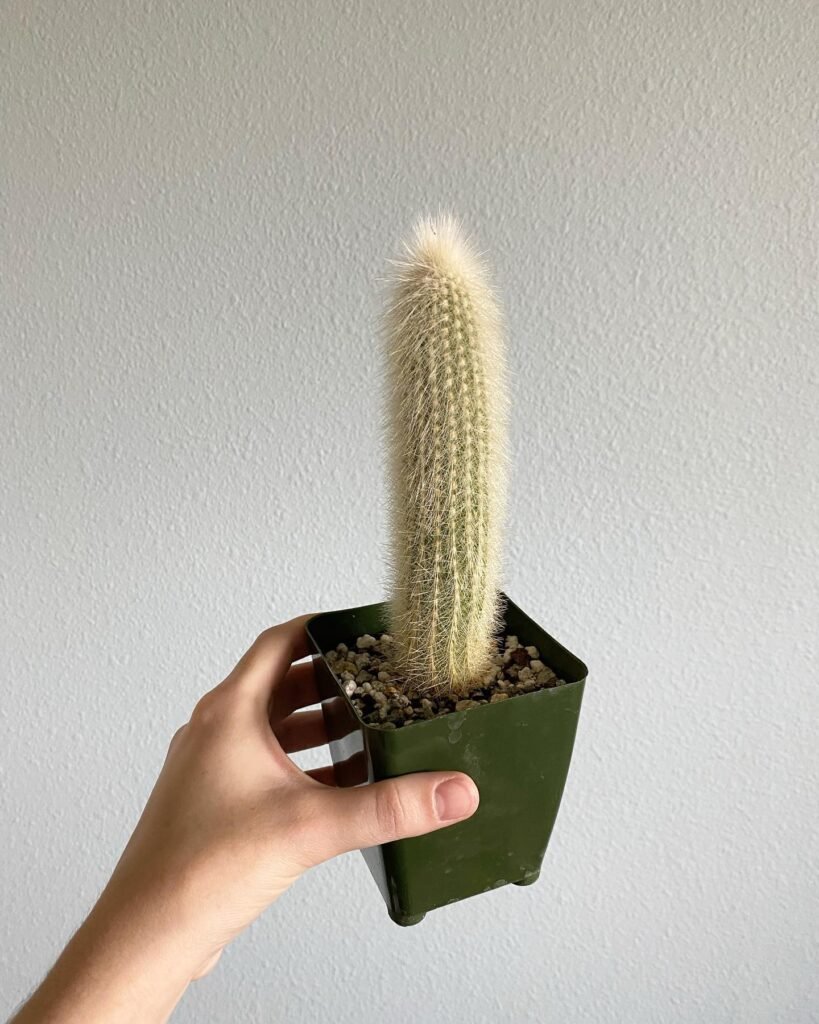
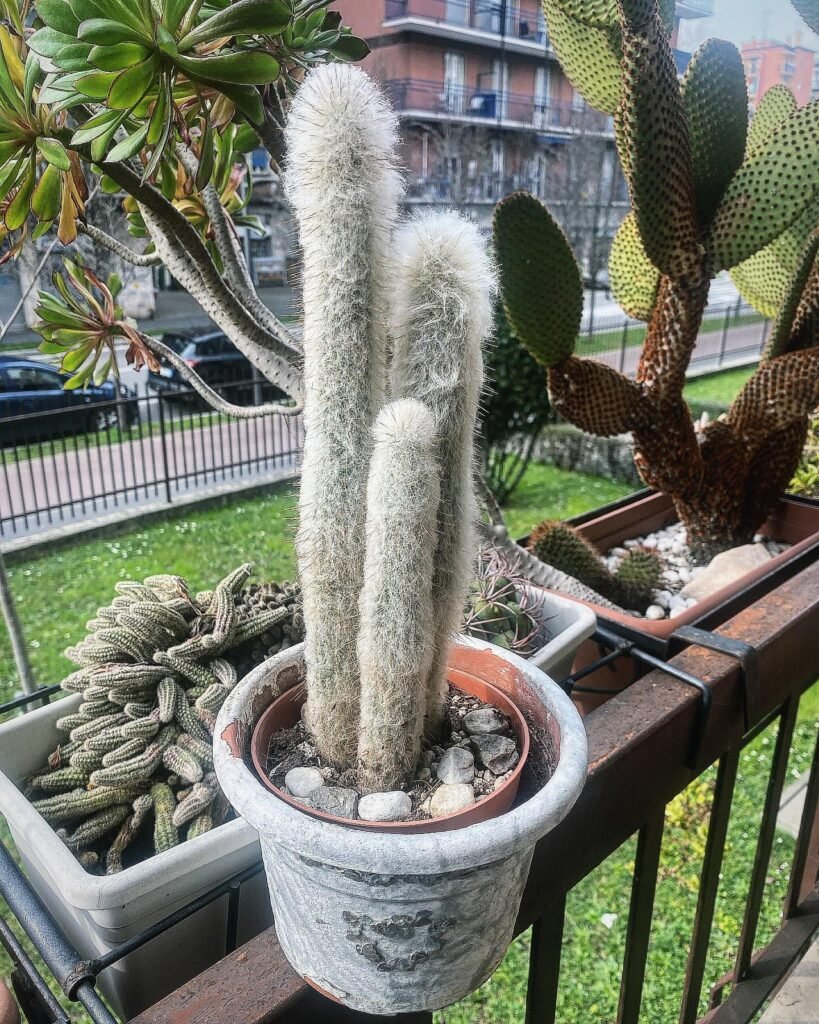
Cleistocactus strausii, also known as the Silver Torch Cactus, thrives in bright conditions and benefits from direct sunlight. It is important to find the right balance and avoid exposing the plant to scorching in midday summer sun. In the UK, placing the Silver Torch Cactus in a south or west-facing windowsill can provide it with sufficient sunlight.
Direct sunlight is essential for the healthy growth of Cleistocactus strausii. However, it is crucial to monitor the plant and protect it from excessive heat during the hottest hours of the day. Providing bright, indirect light is also beneficial for this cactus, especially if direct sunlight is limited.
If you choose to place your Cleistocactus strausii outdoors, make sure it is positioned in a location with partial shade. This will protect it from intense sunlight that can lead to sunburn and damage to the plant.
Remember to rotate the plant regularly to ensure even exposure to light on all sides. This will help prevent the cactus from leaning towards the light source and keep its growth balanced and symmetrical.
Quick Tips on Light for Cleistocactus strausii
- Prefer bright conditions
- Benefit from direct sunlight
- Protect from scorching in midday summer sun
- Place in a south or west-facing windowsill in the UK
- Provide partial shade if placed outdoors
- Rotate regularly for even light exposure

Watering Tips for Cleistocactus strausii (Silver Torch Cactus)
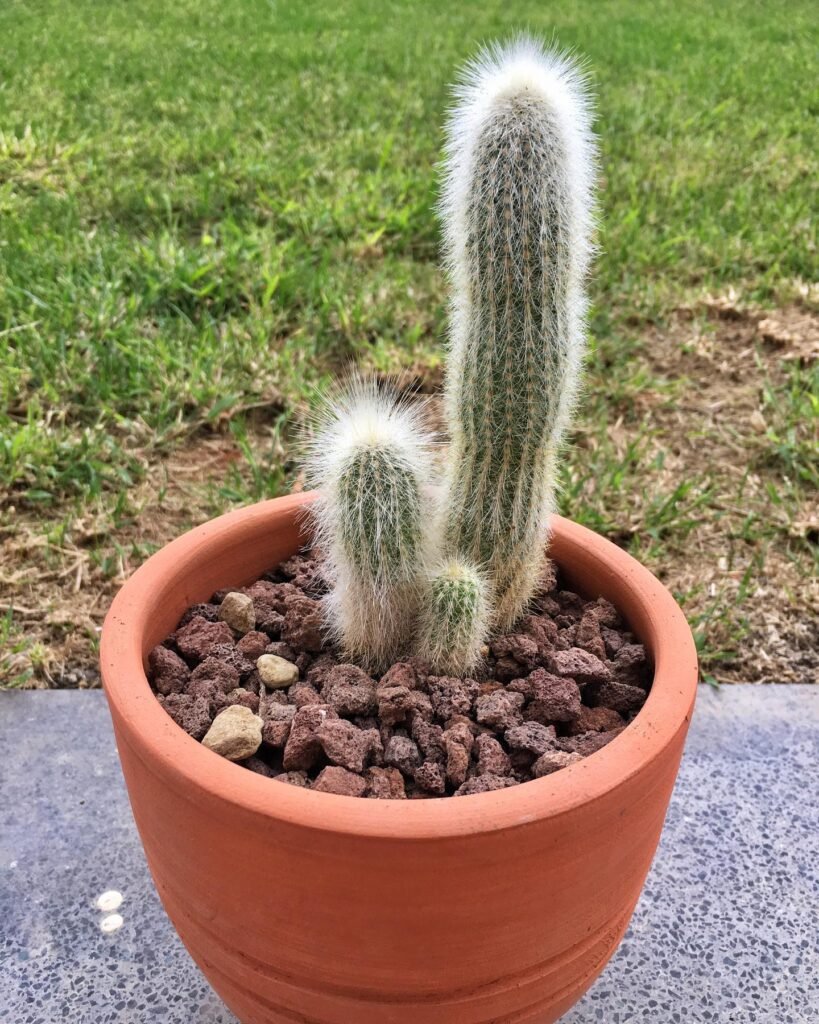

When it comes to caring for your Cleistocactus strausii, proper watering is crucial. Here are some essential watering tips to keep your Silver Torch Cactus healthy and thriving:
- Thoroughly wet the compost: When watering your Cleistocactus strausii, make sure to thoroughly wet the compost. This helps to ensure that the roots are adequately hydrated.
- Allow the compost to dry out: After watering, allow the compost to dry out before re-watering. Cleistocactus strausii is native to arid climates, so it’s important to avoid overwatering, as excessive moisture can lead to root rot.
- Reduce watering frequency in winter: During the winter months, when the plant is in its dormant phase, reduce the frequency of watering. Allow the compost to remain drier for longer, as the plant requires less water during this time.
- Underwater rather than overwater: It’s better to underwater your Cleistocactus strausii than to overwater it. Remember, this cactus is adapted to arid conditions and can tolerate periods of drought. Overwatering can be detrimental to its overall health.
By following these watering tips, you can ensure that your Cleistocactus strausii receives the right amount of water for optimal growth and development.

Fertilizing and Soil for Cleistocactus strausii
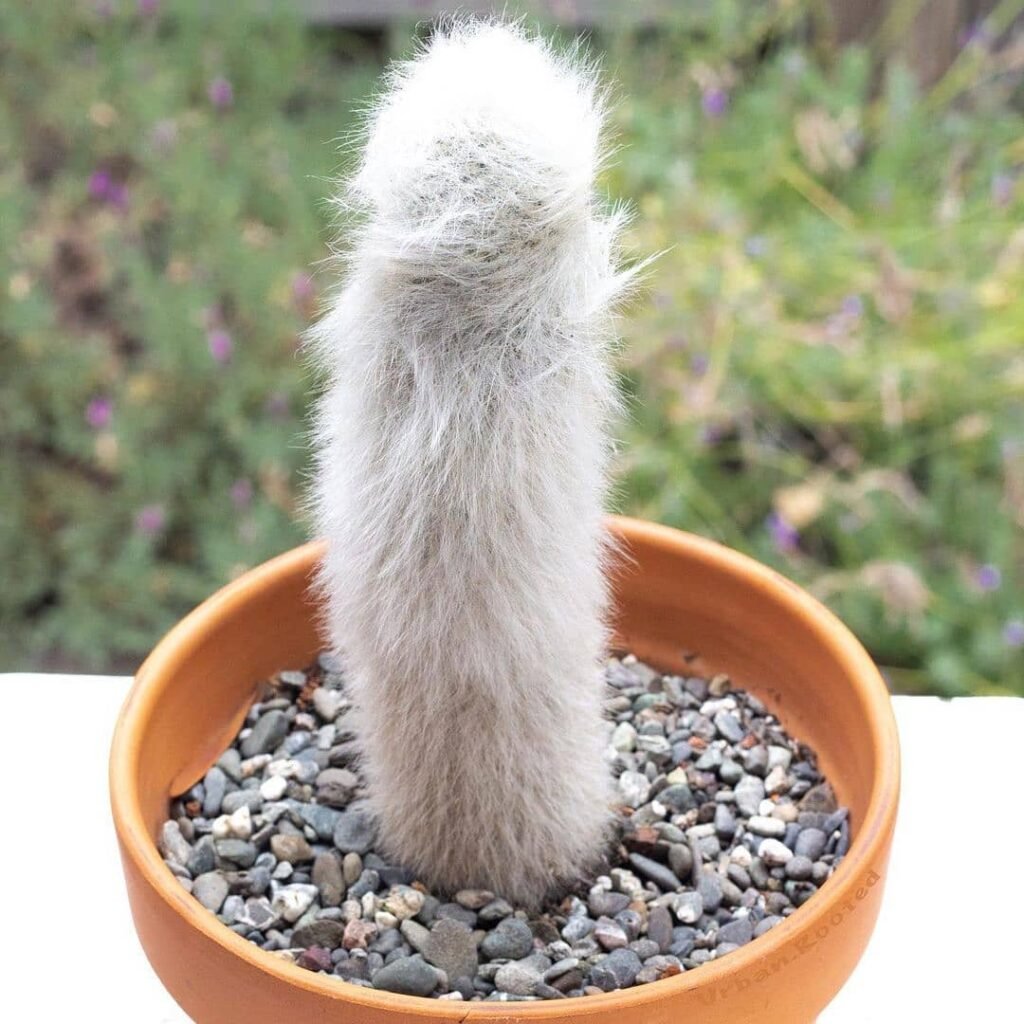
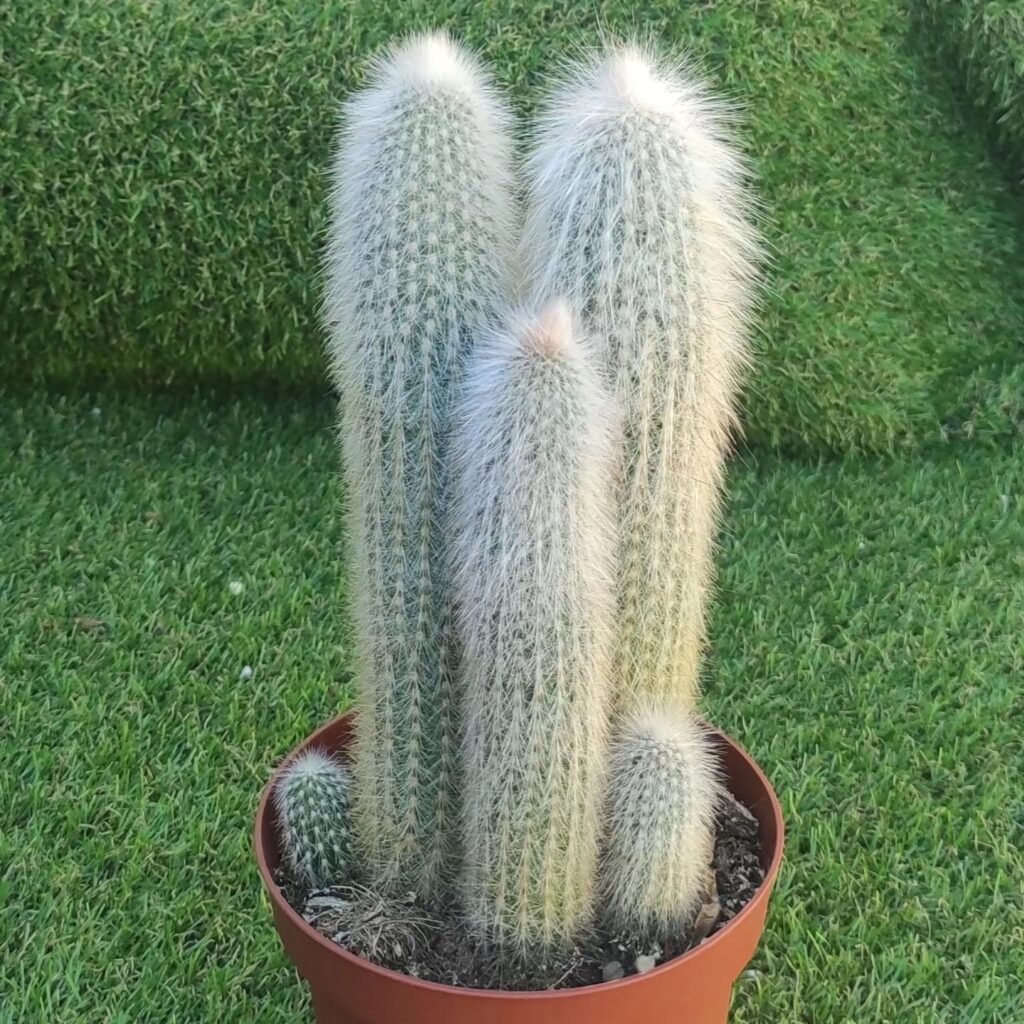
When it comes to caring for your Cleistocactus strausii (Silver Torch Cactus), fertilizing and providing the right soil are important factors to consider. To ensure proper growth and health, follow these guidelines:
Fertilizing:
- I recommend feeding your Cleistocactus strausii once a month with a quality liquid plant food during the spring and summer months. This will provide the necessary nutrients for optimal growth.
- Avoid fertilizing during the winter, as the plant is usually in a dormant phase and doesn’t require as much nutrition.
Soil:
- Cleistocactus strausii prefers a gritty and sharply draining soil mix. You can use cactus soil or create a mix of regular potting soil with sand and fine pumice.
- Consider adding up to 50% amendment to the mix to improve texture and drainage.
By following these fertilizing and soil guidelines, you can provide your Cleistocactus strausii with the optimal conditions for thriving and maintaining its health.

Pruning and Maintenance for Silver Torch Cactus
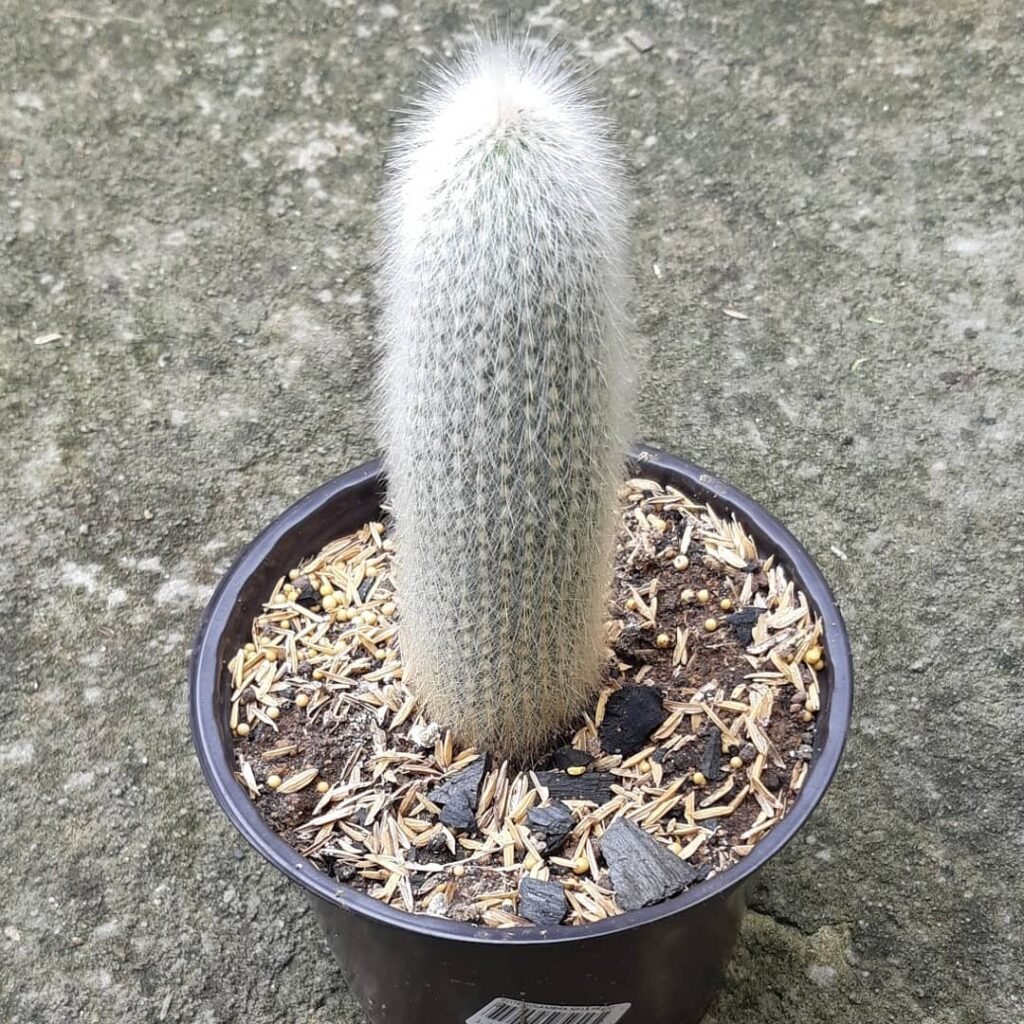
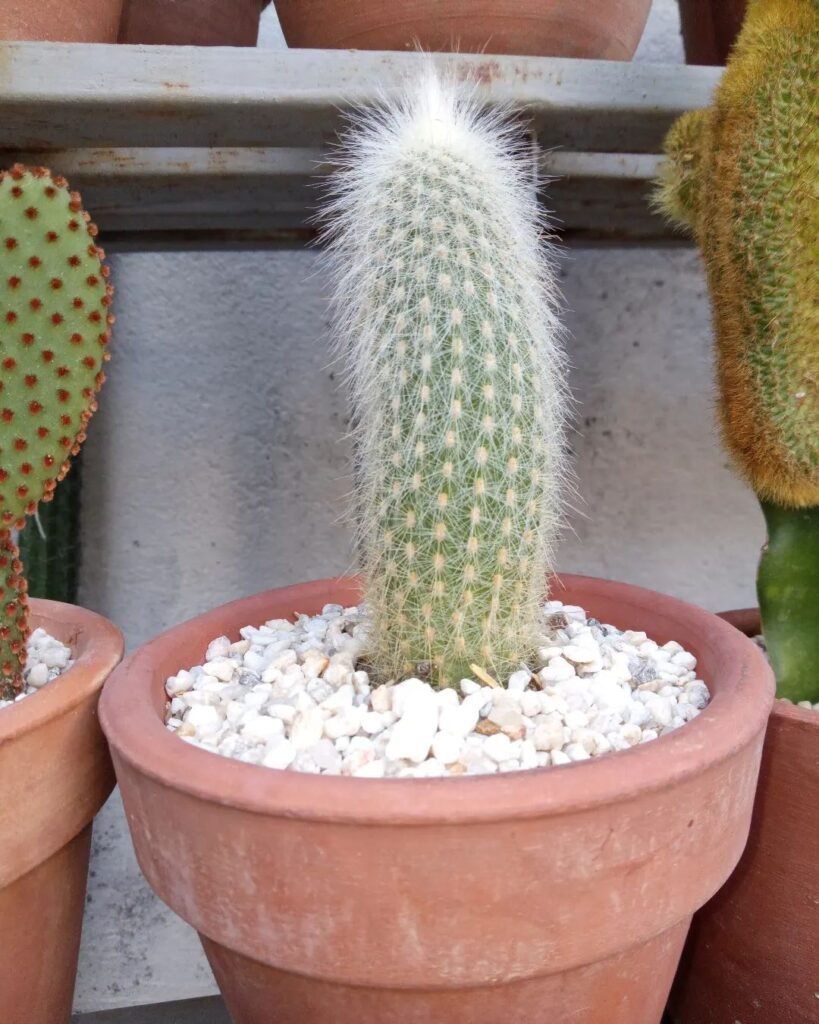
Cleistocactus strausii, also known as the Silver Torch Cactus, requires very little maintenance, making it an ideal plant for busy gardeners. Here are some essential tips for keeping your Cleistocactus strausii healthy and thriving:
- Repotting: Container-grown Cleistocactus strausii plants prefer to be rootbound, so repotting is only necessary every two years. When repotting, choose a planter that is approximately 2″ larger in diameter to provide enough room for the plant to continue growing.
- Handling: When handling your Cleistocactus strausii, it is important to be cautious of the sharp spines that can be found beneath its fuzzy exterior. Use gloves or a soft cloth to avoid injury.
- Toxicity: Keep in mind that Cleistocactus strausii is toxic to humans and animals if ingested. Make sure to keep it out of reach of children and pets.
By following these simple maintenance practices, you can enjoy the beauty of your Cleistocactus strausii with minimal effort.

Propagating Cleistocactus strausii (Silver Torch Cactus)
If you want to expand your collection of Cleistocactus strausii or share this beautiful plant with others, propagation is an excellent option. With proper techniques, you can easily multiply your Silver Torch Cactus and enjoy more of its unique beauty.
Stem Cuttings
Cleistocactus strausii can be propagated from stem cuttings. To start, you’ll need a clean and sharp blade. Carefully sever a segment of a stem or even an entire branch from the main plant. Be mindful of the plant’s spines and protect yourself with gloves if necessary.
After taking the cutting, place it in a shaded area to allow the cut end to callous over for a few days. This process helps to prevent rotting when the cutting is potted. Once the cutting has calloused, prepare a well-draining cactus mix in a suitable pot or container. Make sure the pot has drainage holes to prevent waterlogging.
Plant the cutting in the pot, ensuring that the calloused end is inserted into the soil. Gently press the soil around the cutting to secure it in place. Place the pot in a bright location with indirect sunlight and avoid direct exposure to intense sunlight, which can damage the cutting.
Water the cutting sparingly, allowing the soil to dry out between waterings. Overwatering can lead to root rot, so it’s essential to maintain a balance. After a few weeks, the cutting should begin to develop roots and eventually grow into a new Silver Torch Cactus.
Propagating from Seeds
If you prefer to start from scratch and grow Cleistocactus strausii from seeds, it is entirely possible. Sow the seeds just below the surface in a well-drained soil mix. It’s important to use a soil mix specifically formulated for cacti and succulents to ensure proper drainage.
After sowing the seeds, provide a humid microclimate by covering the container with a plastic dome or a clear plastic bag. This creates a greenhouse effect and helps to maintain the necessary moisture for germination. Place the container in a warm and bright location, such as a sunny windowsill.
Check the container regularly to ensure the soil remains moist but not waterlogged. Germination can take several weeks, so patience is key. Once the seedlings have sprouted and developed a few sets of true leaves, they can be carefully transplanted into individual pots or containers using the same cactus mix mentioned earlier.
Remember, successful propagation requires patience and proper care. With the right techniques, you can grow new Cleistocactus strausii plants and enjoy their beauty throughout your home or garden.

Repotting Tips for Cleistocactus strausii
If you have a Cleistocactus strausii, also known as the Silver Torch Cactus, it is important to know when and how to repot this unique plant. Unlike many other plants, Cleistocactus strausii prefers to be rootbound, so repotting is only necessary every two years. Here are some tips to help you successfully repot your Silver Torch Cactus:
- Timing: Wait until the plant outgrows its current pot or until it has been two years since the last repotting. This will ensure that the plant has enough room to continue growing.
- Choose the right planter: When repotting, select a planter that is 2″ larger in diameter than the current pot. This will provide enough space for the plant without overwhelming it.
- Well-drained soil mix: Use a well-drained cactus mix for repotting. These mixes are specially formulated to provide the right balance of moisture and drainage for cacti like the Silver Torch Cactus.
- Handle with care: When handling the plant during the repotting process, be cautious of the sharp spines beneath the fuzzy exterior. Use protective gloves if necessary and take your time to avoid any accidents.
- Aftercare: Once you have repotted your Cleistocactus strausii, place it in a location with bright, indirect sunlight. Keep an eye on the moisture levels and adjust your watering schedule accordingly to avoid overwatering.
Following these repotting tips will ensure that your Cleistocactus strausii continues to thrive and grow in its new pot, providing you with a beautiful and unique addition to your indoor or outdoor garden.
 Did you know? The Silver Torch Cactus forms an extraordinary duo with hummingbirds, relying on them for pollination. This rare desert dance highlights nature’s wonderful symbiosis.
Did you know? The Silver Torch Cactus forms an extraordinary duo with hummingbirds, relying on them for pollination. This rare desert dance highlights nature’s wonderful symbiosis.
Helpful Videos about Cleistocactus strausii (Silver Torch Cactus)
I’m thrilled to introduce a series of videos focused on the Cleistocactus strausii, also known as the Silver Torch Cactus. This selection is designed with the novice gardener in mind, breaking down the care essentials into simple, understandable pieces. From helping your Silver Torch Cactus flourish to ensuring it stays healthy, these videos are here to guide you every step of the way. Ideal for those new to gardening or looking to grow their plant care skills, this series will help you keep your Silver Torch Cactus in prime condition.
FAQ about Cleistocactus strausii (Silver Torch Cactus)

Wondering how to best care for your Cleistocactus strausii, commonly known as the Silver Torch Cactus? Explore my detailed FAQ for all the essential tips on nurturing your plant. From securing the ideal light conditions to nailing the watering routine, and all the general maintenance advice in between, I’ve gathered everything you need to ensure your Silver Torch Cactus not only survives but thrives.
The Silver Torch Cactus, or Cleistocactus strausii, is a slender, columnar cactus known for its striking silver-white hair-like spines. It originates from the mountainous regions of Bolivia and Argentina.
This cactus prefers bright, indirect sunlight. In the UK, a south-facing window is ideal, but avoid direct midday sun which can scorch its skin.
Yes, but it must be kept indoors in a well-lit, cool room. The Silver Torch Cactus can tolerate temperatures down to about 5°C, so ensure it’s protected from frost.
Water sparingly. Allow the soil to dry out completely between waterings. In winter, reduce watering to once a month or less.
Use a well-draining cactus or succulent mix. Adding perlite or sand improves drainage, essential for its health.
Feed it with a cactus-specific fertiliser once during spring and once in summer, but avoid feeding in autumn and winter.
It typically flowers in summer, once mature (about 10-15 years old), producing stunning pink blooms.
It’s best grown in pots that can be moved outside during warmer months and brought indoors when the temperature drops.
Gently remove the cactus from its current pot, knock away old soil, and place it in a slightly larger pot with fresh cactus mix. Do this in spring or early summer.
Mealybugs and spider mites can be a problem. Inspect regularly and treat with a suitable insecticide if needed.
No, the Silver Torch Cactus is not toxic, but its spines can cause injury, so keep it out of reach of pets.
It prefers a dry environment. In more humid areas of the UK, ensure good air circulation to prevent rot.
Yellowing can indicate overwatering or too much direct sunlight. Adjust care accordingly.
Indoors, it can reach up to 3 feet tall, but growth is slow.
I hope this guide has put you on track to expertly care for your Cleistocactus strausii. If you have more questions, pop them in the comments below, and I’ll get back to you. Remember, we all start from scratch, and there’s always more to learn about your plants.





